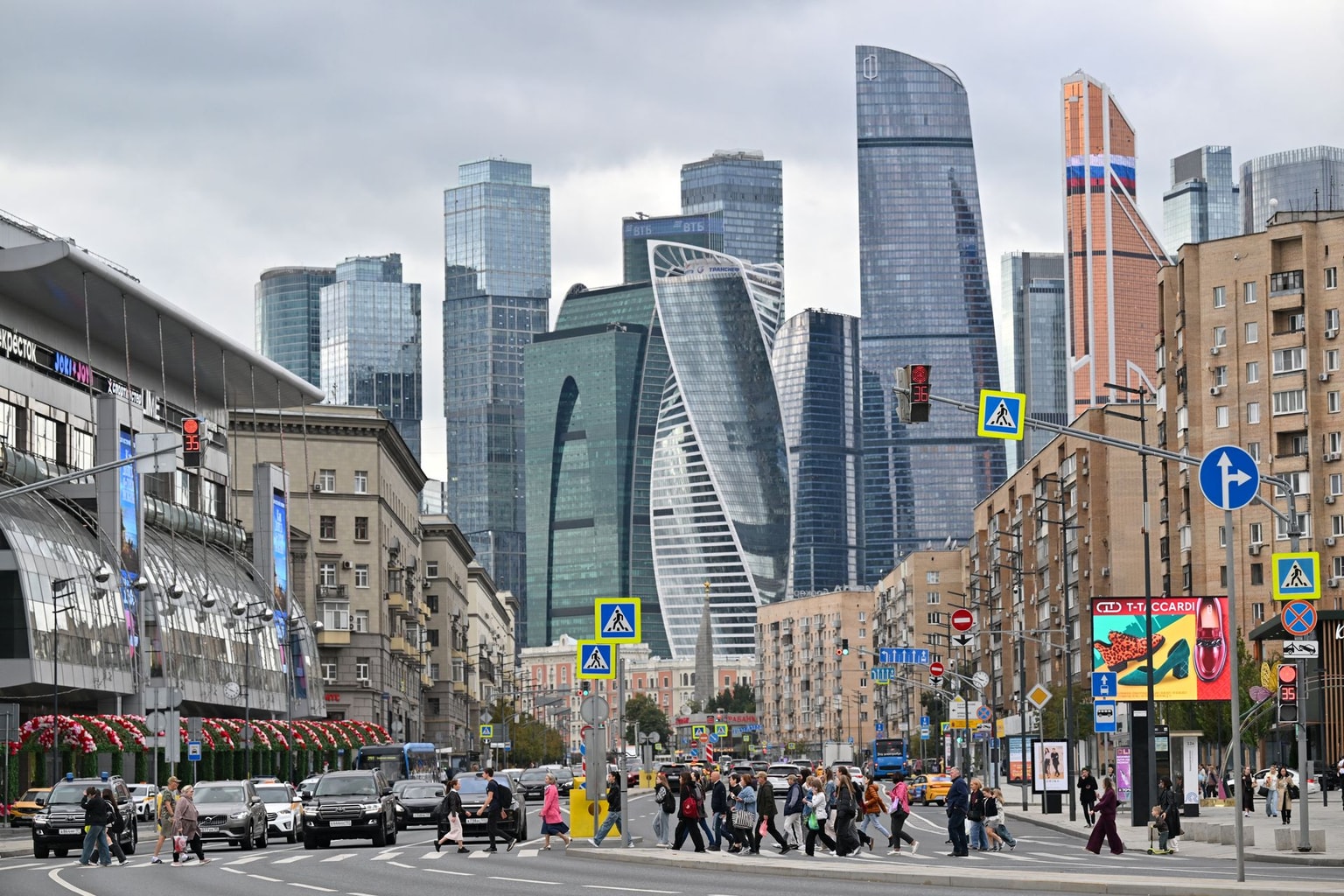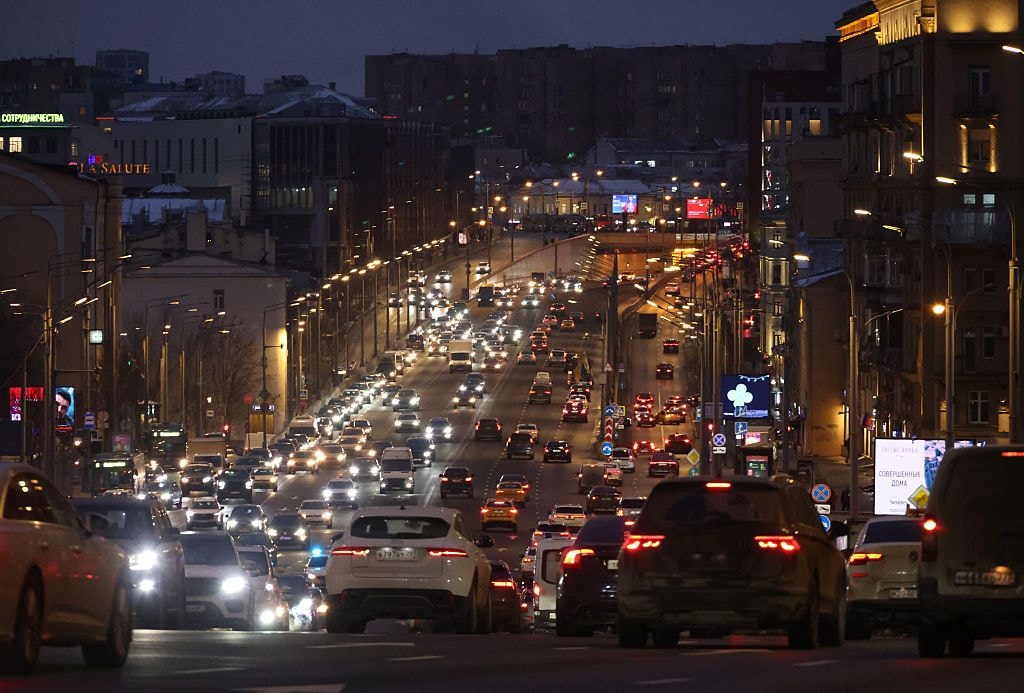
Ukraine struggles to contain Russian advance in Donetsk Oblast as US elections loom
Chronic manpower shortages are at the heart of local retreats and collapses in Ukraine's defense that translate to quicker Russian gains across the front.
Ukrainian soldiers camouflage a damaged MT-LB (light armored multi-purpose towing vehicle) in the Donetsk Oblast after initial repairs and carrying out initial checks on October 25, 2024. (Fermin Torrano/Anadolu via Getty Images)
As voters in the U.S. head to the polls in presidential elections set to decisively steer the trajectory of Russia’s full-scale war against Ukraine, the situation on the battlefield is beginning to unravel for Kyiv.
After two years of brutal attritional warfare across southern and eastern Ukraine, dynamism has returned to the front line.
According to a Bloomberg analysis published on Nov. 1, Ukraine has lost 1,146 square kilometers of its own territory since the launch of the Kursk Oblast incursion in early August, with the week up until Nov. 1 reported as the worst in terms of lost territory in all of 2024.
On Nov. 2, Commander-in-Chief Oleksandr Syrskyi said that Ukraine was facing “one of the most powerful” Russian offensives since the start of the all out war.
Over autumn, large chunks of Ukrainian territory, sometimes including entire cities, have been lost on a near-daily basis in southern Donetsk Oblast, while Russian forces have also made operationally significant gains near Toretsk, Chasiv Yar, Kupiansk, as well as on their own soil in Kursk Oblast.

The increasing pace of Russia’s advance is evidence of how the war of attrition that many officials and analysts in the West had called a “stalemate,” had, slowly but surely, been flowing in Moscow’s favor.
With manpower shortage and systemic structural issues at the heart of Ukraine’s predicament, the options for Kyiv and its partners to stabilize the front in the face of Russia’s acute resource advantages look limited.
Desperation on the steppe
The most critical sector of the front line as of early November is in the southern half of the Ukrainian-controlled part of Donetsk Oblast.
After advancing quickly beyond Avdiivka towards the key logistical hub of Pokrovsk over summer, Russian forces pivoted south in early September, cutting off a large pocket of Ukrainian-held land west of the Vovcha River with the successful capture of the city of Ukrainsk.
Further Russian advances toward Pokrovsk initially slowed over autumn, halted at the gates of the city of Selydove, where the relatively fresh 15th National Guard Brigade took over the defense of the mining city once home to over 22,000 people.
Over the next two months, however, instead of storming Selydove, the Russian troops picked away at the fields on either flank, which were both manned by more exhausted Ukrainian brigades plagued by personnel losses.
“It's a very tough situation to be honest,” Andrii, callsign “Mazhor,” a Ukrainian artillery officer with the 15th Brigade, told the Kyiv Independent.
“The neighboring units left our flanks bare and we were almost completely surrounded.”
Meanwhile, the almost two year-long defense of Vuhledar, dubbed a city fortress by many Ukrainians, ended with its capture by Russian forces in the first days of October. Heavy losses and relentless enemy assaults forced what was left of Ukraine’s 72nd Mechanized Brigade and other attached units to withdraw from the city across fields swarming with Russian drones.
The fall of Vuhledar handed Russia a significant advantage in the fight for the vast open fields north of the city, the position of which on higher ground allows for the placement of antennas enabling reconnaissance and strike drones to fly deep behind Ukrainian lines.

As of early November, Ukrainian lines northwest of Vuhledar have incurred successive local collapses, leading to some of the most rapid Russian gains since the early months of the full-scale invasion.
Piercing through Ukrainian lines before clearing the positions in between the breakthroughs, Russian forces advanced over ten kilometers north across the open steppe, bringing them closer to the main road leading into the city of Kurakhove.
Kurakhove, whose large thermal power station was still working back at the start of 2024, is now itself quickly being encircled on three sides.
If not contained, Russia’s southern Donetsk offensive could soon spill out of the oblast’s own boundaries.
The advances now threaten the western town of Velyka Novosilka, and beyond it, the eastern borders of Zaporizhzhia and Dnipropetrovsk oblasts.
Pressure on all fronts
As dramatically as the front line has moved in southern Donetsk Oblast, it is not the only sector of the front line where recent Russian gains represent a serious cause for concern for the Ukrainian defense.
Northwest of Pokrovsk, heavy urban fighting continues in the twin cities of Toretsk and Niu York, where Russian forces continue to make small incremental gains through the cities’ ruined streets.
Over spring and summer, Ukraine’s defense of Chasiv Yar, just five kilometers west of the destroyed city of Bakhmut, seemed to be a relative bright spot on the front line.
There, Ukraine’s experienced 24th Mechanized Brigade had held Russian forces at a near standstill on the western edge of the city for months, aided greatly by the formidable defensive barrier that is the Siverskyi Donets-Donbas Canal.
But after sustained pressure, countless failed assaults, and the mass use of drones complicating the Ukrainian defense, Russian forces breached the canal in mid-October, both along the main highway into Bakhmut, and inside the urban area of Chasiv Yar itself.
If Russian forces can cement their presence on the western side of the canal and advance further, they could close the distance to the cities of Sloviansk, Kramatorsk, and Druzhkivka.
Further north in Kharkiv Oblast, while the defense of the area around Kharkiv itself has remained almost static since the Russian initial push in May, large chunks of liberated territory are under threat of a second occupation near Kupiansk.
Ukraine’s hold on the territory east of the Oskil River, which Kupiansk straddles, has been put under real threat by Russian advances, most notably around Pishchane, where a new Russian salient gradually pierced through 15 kilometers of Ukrainian-held territory to reach the riverbank.
Meanwhile, in Russia’s Kursk Oblast, where Ukraine’s surprise incursion had initially overwhelmed the thin defenses on the state border, Kyiv is also now squarely on the back foot.
Ukraine’s hold over Russian territory has shrunk to almost half its original expanse as fresh Russian forces sent there took back a slew of settlements in successive counteroffensive pushes.
On top of the initial force that broke through in August, Kyiv has been forced to commit some of its strongest units to prop up the defense of the areas controlled in Russia’s Kursk Oblast, a task only expected to become harder as North Korean troops enter the fight.
The only major part of the front line that has been notably quieter has been in Zaporizhzhia Oblast, but this might not be the case for long.
Over summer and autumn, Russian forces have slowly carved away at the small salient that Kyiv retook at immense cost in the 2023 summer counteroffensive, and now, with many stronger units peeled off the Zaporizhzhia front line, the threat of a new Russian push from the south looms high.
Personnel predicament
Throughout 2024, one issue that has been consistent across the board for Ukraine on the battlefield is the lack of quality manpower.
Now, although itself exacerbated by ammunition shortages, poor fortifications, and issues in command, it is precisely Ukraine’s dire manpower situation that has been the main factor allowing Russia to advance at greater pace along the front line, according to three officers who spoke to the Kyiv Independent from three different sectors in Donetsk Oblast.
The greatest problem is, as always, in the infantry, whose job of holding zero line positions in the face of daily Russian assaults, bombardment, and drone attacks is consistently the most dangerous and least desirable.
The reasons for the shortage are well-documented, first and foremost rooted in Ukraine’s struggle over 2024 to mobilize and properly train enough combat-capable men.
Ukraine’s new mobilization law — finally passed in April this year — lowered the draft age to 25, expanded data collection for all eligible men, but did not offer an end point for military service after a clause setting the term for demobilization at 36 months was removed at the last minute.
“Of course, we need a breath of fresh air, and at the very least, a reliable rear guard,” said a senior officer fighting near Kurakhove, who requested to remain anonymous, to the Kyiv Independent.
“But we see a very different picture: donations are dwindling, people don’t want to join the army because, as always, something doesn’t sit right with them. As a result, soldiers are already exhausted, both mentally and physically.”

Another issue is how Ukraine’s newly-mobilized infantry are then used.
On top of Ukraine’s chronic issues with its basic training, which is often inadequate and dominated by Soviet-era practices, many newly-mobilized soldiers end up in newly-formed brigades, which — without any combat experience — inevitably end up taking more losses and suffering more cases of desertion once sent to battle.
On the battlefield, these problems ultimately end up compounding.
Inadequate mobilization leads to not enough soldiers to replenish ranks or create enough new brigades, while issues with training, the selection of older, less-fit men, and the sending of new brigades without combat experience into battle in turn leads to higher losses and the need to mobilize even more people.
Over time, if they take losses that aren’t being replenished for long enough, even Ukraine’s strongest and battle-hardened brigades begin to quickly lose their combat effectiveness as units.
"The manpower situation has deteriorated over the past year," said Rob Lee, senior fellow at the Foreign Policy Research Institute.
"Most brigades rarely rotate from the front line, which can lead to exhaustion and degradation over time.
"Ukraine’s 110th and 72nd mechanized brigades had both held Avdiivka and Vuhledar since 2022 before Russia captured them after lengthy and costly assaults."

Ukraine is working on combatting the Soviet-era legacy in its draft system, former Ukrainian commander-in-chief Valerii Zaluzhnyi said in October, while Kyiv has also tapped into a new source of manpower by allowing prisoners to serve, mostly as infantry.
Meanwhile, recent reports of the sending of specialists from artillery, air defense, and other specialist units to the infantry to replenish losses testify to the depth of the crisis across the military.
Amid daily long-range drone attacks on Kyiv, controversial MP Mariana Beuzhla claimed on Nov. 2 that air defense specialists were being sent to the infantry, a fact tacitly confirmed by Air Force spokesperson Yurii Ihnat.
One commander fighting north of Chasiv Yar said that by the end of summer, his battalion’s infantry had completely run out, with artillerymen and drone operators sent in groups of 2-4 to occupy zero-line positions one at a time.
Fighting fires
As much as Ukraine continues to struggle with its own manpower crisis, much of Russia’s success continues to be to Russia’s overwhelming numbers advantage, both in manpower, ammunition, and equipment.
Russian forces have also continued to refine the the practice of targeting the weak points in Ukrainian lines, manned by more poorly-trained, poorly-equipped or simply more exhausted brigades.
The problem is especially acute in southern Donetsk Oblast, where the greatest Russian gains have been made in sectors defended by Territorial Defense (TDF) units.
“Neighboring units lose their positions without reporting it to their higher command because they are scared of being punished for retreating,” said the officer fighting near Kurakhove.
“While they continue to report that they are holding, the Russians come in and take control of them, and in doing so, often cut off our troops.”
This systematic overstretching, according to Lee, has ultimately only been exacerbated further by the Kursk Oblast incursion, which only lengthened the active front line that Ukrainian unites needed to defend.

"Kursk has further stretched Ukrainian forces," said Lee, "leaving commanders with fewer reinforcements and reserves to respond to Russian advances elsewhere."
Amid this unending pressure, Ukraine’s higher command often reacts in a way that is controversial at best and self-destructive at worst: peeling off battalions and even companies from brigades and sending them to other sectors of the front line under the command of different brigades.
What results is a chaotic, disjointed command structure that seeks to constantly fight fires, at the detriment to overall combat effectiveness.
"Instead of operating as cohesive units, many brigades have also piecemeal deployed battalions to other parts of the front line, which leaves them weakened," said Lee.
"This and other stop gap measures are only short-term solutions, and they create greater problems the longer they are employed."
Hanging in the balance
Looking ahead to the coming winter on the battlefield, the greatest unknown remains the question of how long Russia can continue to attack at this rate across so many fronts.
As Moscow expanded offensive operations through summer and autumn, its losses have also surged.
On Nov. 4, Russian personnel losses reported by Ukraine’s General Staff passed the 700,000 mark, with daily figures often passing the 1,200 mark.
Moscow’s move to double the sign-up bonus for contract soldiers in July, as well as the bringing in of thousands of North Korean soldiers to the fight, are testament to the fact that Russia’s own manpower resources are not infinite.
Still, these signs of strain are yet to translate into slowing down, let alone actual culmination, on the battlefield.
"The situation on the battlefield this winter primarily depends on how long Russian can continue to recruit 20,000-30,000 volunteers per month," said Lee.

In that light, whatever the result of the U.S. election this week, it is difficult to see how any action from Ukraine’s partners can quickly make a difference to the infantry war on the ground.
Come next year, much of Ukraine’s fate will likely be decided by the next occupant of the White House.
But in the meantime, Ukrainian soldiers say, the country must tackle its own problems if Russia’s advance is to be stopped.
“It’s completely possible to stabilize the lines if everything and everyone worked for the front,” said the senior officer fighting near Kurakhove, “they could mobilize healthy, ordinary men. People back home could donate like they did in the early days.
“Then we would have the means and reliable infantry. But, unfortunately, that sounds like a dream right now… it’s far away from the reality."

Note from the author:
Hi, this is Francis Farrell, who wrote this piece, which, while it certainly won't fill you with hope, might just be a reminder of what is still at stake in this war. Well, this is it, this is the moment that could make or break Ukraine's struggle for existence, independence, and freedom, and it will be decided by millions of people an ocean away from Ukraine. Whatever the result of the election, the winter ahead is going to be a very dark and very unpredictable one, but none of that means we will stop our work for a second. Please consider supporting our reporting.


















